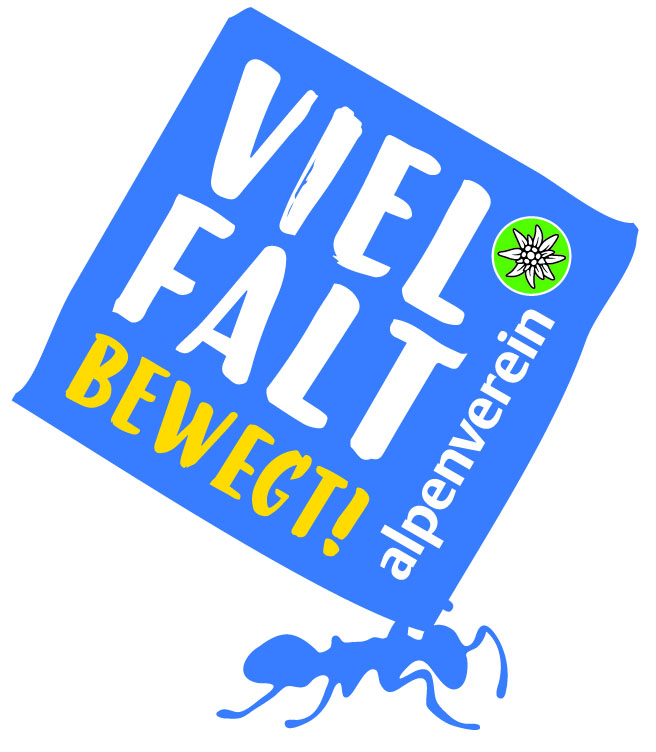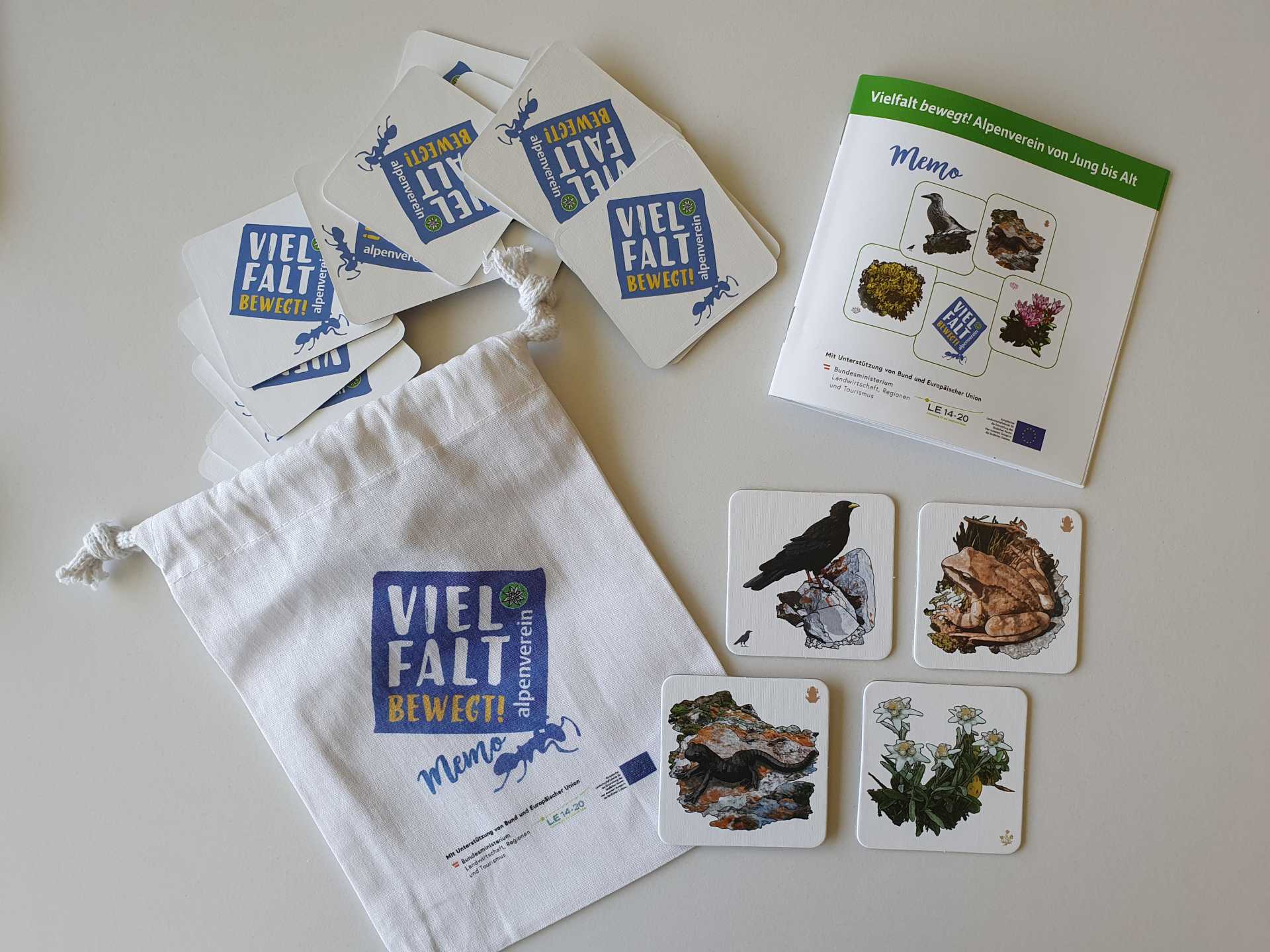
Vielfalt bewegt! Alpenverein from young to old
This project of the Austrian Alpine Association - a biodiversity monitoring above the timberline - increases our knowledge about alpine animal and plant species, their habitats and about the interrelationships of our actions and the effects on this sensitive living environment. The collected data on the 20 animal and plant species contribute to scientific questions on biodiversity in the Alps.
Message
Which animals live and which plants grow in our mountains? Within the framework of "Vielfalt bewegt! Alpenverein from young to old" the Austrian Alpine Club investigates the most elevated habitats in Austria - a project for mountain enthusiasts and everyone who wants to become one!
This project overseen by the Austrian Alpine Club is planned as a long-term study and should contribute to the preservation and promotion of biological diversity in the Alps. Biodiversity monitoring in the highest habitats in Austria is intended to inspire people with an affinity for the mountains.
Like all citizen science projects, this project also depends on its voluntary helpers, who observe typical animal and plant species of the Alpine region over a longer period of time and condense and pass on their knowledge about the Alpine habitat.
Aims of the project
The purpose of monitoring is to develop appropriate measures on the basis of the knowledge gathered, which can reduce the decline of species and secure or improve habitats for endangered species in the long term. The consequences of climate change (migration of some species to higher regions or changes in food resources) can also be demonstrated in this way. On the one hand, distribution maps are to be generated to provide information on the occurrence of the individual species and, on the other hand, the data are to be made available for publications etc. on request.
The project offers mountaineers the opportunity to experience nature consciously and attentively again in contrast to summit attempt and pressure to perform.
The project "Vielfalt bewegt! Alpenverein from young to old" provides knowledge about alpine species and the connections to the conservation of biological diversity in alpine habitats in an age-appropriate form for children, youths, parents and grandparents. The pillar for the long-term continuation of the project idea is the intergenerational exchange about nature, its habitats and species. Parents and grandparents become multipliers. In the course of this, cooperation with "Alpenvereinsjugend", which has been active in education for sustainable development for a long time, is also strengthened.
-
 Alpine salamander Alpine salamander
Alpine salamander Alpine salamander -
 Small Apollo Small Apollo
Small Apollo Small Apollo -
 Mountain Arnica (Wolf's bane) Mountain Arnica (Wolf's bane)
Mountain Arnica (Wolf's bane) Mountain Arnica (Wolf's bane) -
 Alpine chough Alpine chough
Alpine chough Alpine chough -
 Mountain avens Mountain avens
Mountain avens Mountain avens -
 Identifying species Identifying species
Identifying species Identifying species -
 Alpine Azalea Alpine Azalea
Alpine Azalea Alpine Azalea -
 Identifying species II Identifying species II
Identifying species II Identifying species II -
 Identifying species III Identifying species III
Identifying species III Identifying species III -
 Spotted Nutcracker Spotted Nutcracker
Spotted Nutcracker Spotted Nutcracker
https://www.citizen-science.at/en/projects/project-archive/vielfalt-bewegt-alpenverein-from-young-to-old#sigProId5891ec5508
Procedure
Different indicator species, which have their habitat above the forest line, were selected on the basis of various criteria - including alpine ptarmigan, mountain avens, oak spider or mountain azalea.
Observations are made at any time and on any hike, as the whim takes you!
Compact identification guides for the selected plants and animals should make it easier for the observers to track down the species during their hikes. Exciting and informative stories serve as a reminder. Data from nature observation, such as geographical location, altitude, weather or a description of the habitat of the indicator species, can then be entered in clearly structured questionnaires. As a matter of principle, observations are only made along existing hiking trails in order to conserve flora and fauna.
To make monitoring a little easier, a handy mapping guide was designed that can easily be taken into the field in addition to the 20 revised identification guides. In the mapping guide, the monitoring is briefly introduced again and it is explained where, how and when the 20 species sought can best and most easily be found. Selected identification sheets as well as the mapping instructions can be downloaded at the bottom of this page. A continuously updated distribution map can be seen here. The nature diary presents 20 animal and plant species that are typical for the Alpine region and also describes many helpful tips and tricks for observing them.
To record the observations, you can either use the web portal "Diversity moves, Alpine Association" or the app of the project. You can take photos directly with your smartphone; your location is automatically determined by the GPS transmitter. This way, if the internet connection is up and running, the observation can be transmitted directly to the web portal. If there is no reception, the data is saved locally in the app and sent to the web portal as soon as a connection can be found again.
How can you participate?
To take part in "Diversity moves! Alpine Club from Young to Old", you can register for the project via the registration form on the website. As soon as the registration is completed, you will receive a confirmation from the project team and can get started right away.
Memo Game
Within the project "Diversity moves! Alpine Club from Young to Old" (Biodiversity Monitoring), a beautiful memo game with 32 pairs of cards has been created. The drawn illustrations show different alpine animal and plant species that have their habitat above the timberline. In the enclosed booklet, in addition to the game instructions, all species are explained and their special characteristics highlighted. Sustainably packaged in a handy cotton bag, the game takes up hardly any space.

© Birgit Kantner
With the support of the federal government and the European Union within the framework of the implementation of the Austrian Programme for Rural Development 2014-2020.
This project fulfilled version 1.1 of the quality criteria for citizen science projects on Österreich forscht.
Download attachments:
- plants
- animals

